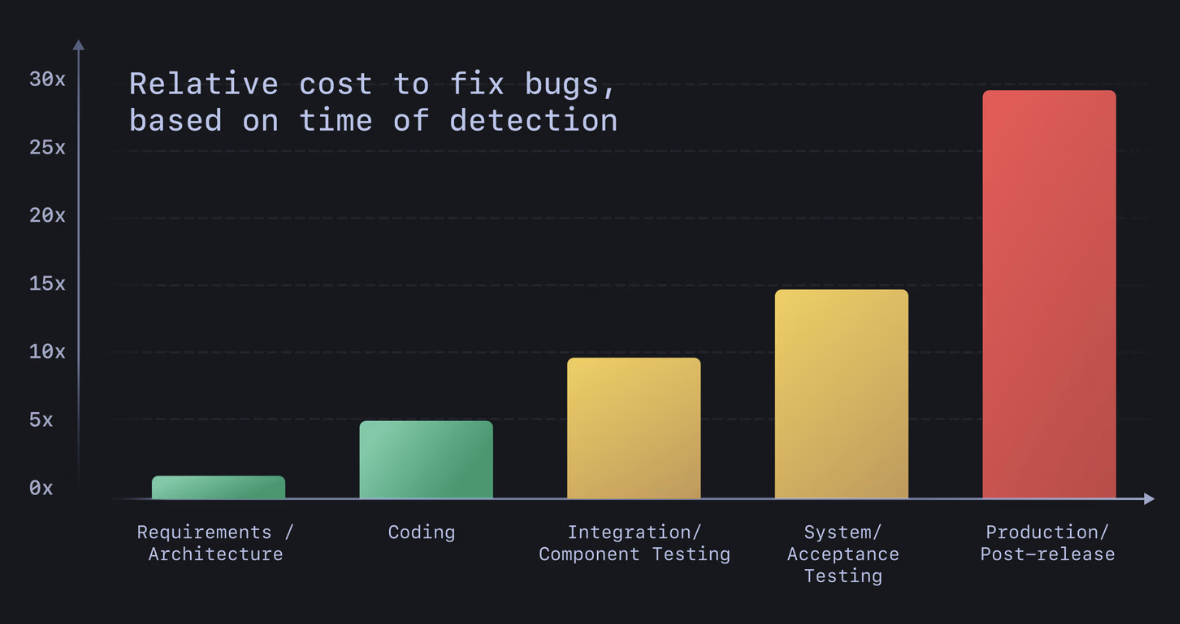
We are using cookies for secure log-in and to improve our app.
First party only, no data krakens 🦑 Learn more in our privacy policy.
QA-suggested changes to development workflows often get a blowback from engineering teams. Introducing AI-powered end-to-end (E2E) testing is no different. For once - it’s tests - not all developers are thrilled about testing as a concept. Especially when it comes to end-to-end tests. And then the AI part? Difficult to digest.
Here are 6 reasons why we believe automated, AI-powered e2e tests belong to every development pipeline - for the benefit of both the code and the people who build it.
Manual testing is like manual linting or manual type-checking: it's prone to human error and, honestly, it just doesn't scale. Automatic execution of tests within your CI pipeline ensures reliability. Without automation, many devs often think, "my change isn't significant, so I'll skip testing" - cue broken code and unhappy engineering. Automation means your tests always run. Consistency is king, and automatic testing is how you get there.
Of course, the execution speed is of importance, developers move fast and can’t wait hours for the test suite run to finish. Well constructed test runners that parallelize without elaborate setup are your best friends.
It's no secret: bugs found later in the software development cycle are exponentially more expensive. Fixing a bug in staging can cost 5-6 times more than if caught in development, and in production, it's at least 10x - possibly even catastrophic if you lose users or revenue. Automatic E2E tests find issues early, save your team from costly context switching, extra ticket overhead, blocked releases, and late-night firefighting.

Sure, blocking merges with automated tests might initially frustrate the dev who just wants to "get their code out there." But trust us: everyone appreciates not being woken up at 2 am because of a production outage. Automated tests act as gatekeepers, preserving everyone's sleep, weekend plans, and sanity. It might seem restrictive at first, but soon enough, engineering teams eventually realize good QA saves their future selves from unnecessary headaches.
Devs know it, QA engineers know it. Tests are production code. Treating tests with the same care and rigor as your application code ensures maintainability and scalability. Optimizing tests for speed and parallel execution might feel like extra work initially. But a fast, highly parallel test suite means quicker feedback, higher developer productivity, and more confident deployments. And AI-powered testing platforms make this optimization significantly easier and more effective.
Quality assurance isn't solely about catching bugs. It's about building a mindset where everyone contributes to quality. Tests shouldn't be something developers dread - they should be part of an engineering culture that embraces high-quality standards. Encouraging devs to write and manage tests at appropriate levels (think: testing pyramid) helps them to produce better, more reliable code. Tests not only help identify issues but also foster a shared sense of responsibility for quality across the team.
Everyone who ever used an LLM to generate a more complicated end-to-end test knows how inconsistent the outcomes are. But “using AI for testing” doesn’t always mean to throw some code at an agent and let it generate a test for it. State-of-the-art testing platforms use AI in many different ways - taking advantage of its strengths while keeping critical functions deterministic.
If you don’t use AI in your testing workflow, you risk settling for slower delivery cycles, higher costs, more bugs slipping into production, and potentially burnt-out dev teams dealing with avoidable emergencies.
